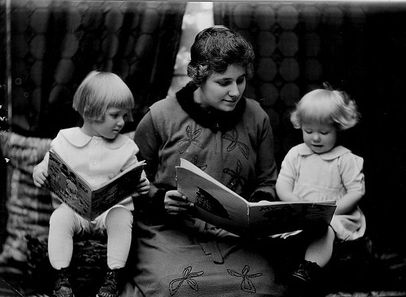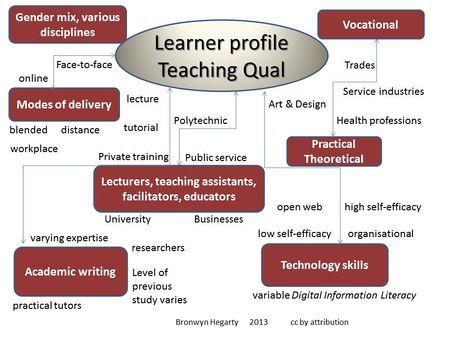Analysis of learners
Contents
Who are my learners?
- How many of them will there be? Where are they going to be studying? What are their ages, their previous educational experience, their life and work experience? What kind of people are they? How do they prefer to learn?
You may feel that you know your "typical student" quite well already, but have you really thought about their learning characteristics and preferences and whether your course meets their needs? The needs of all 'stakeholders', including the students, have to be considered. Integrating good design principles with what you ask of students (the learning process) and meshing all this with the learning outcomes is what Constructing Courses to Enhance Learning is all about... so we will start by knowing the learners.
When it comes to learning, we all have preferences that are influenced by the ways in which we think - our personalities, our backgrounds and our culture. For example, some students may prefer participating in group practical tasks or projects rather than reading long research articles and writing long essays on their own.
What are learning styles and preferences?
Learning styles are defined as: "The individual's characteristic ways of processing information, feeling and behaving in learning situations" (Learning and Skills Development Agency, 2013). In a nutshell, learning styles and preferences help to describe how people learn, and are useful in raising their awareness about this. However, it is worth noting that over reliance on one or two specific learning styles can be misleading and harmful. Therefore, it is more effective to guide students to develop skills for what is known as metalearning - an awareness of how they learn. This enables them to plan, monitor and evaluate their learning and requires metacognition.
A popular model in the New Zealand context is the VARK – guide to learning styles. Neil Fleming has developed a tool to explore learning preferences that considers these in terms of the following modes of learning:
- visual
- aural
- kinaesthetic
- reader/writer.
Although they may have a preference, for example, to attend lectures rather than study online, students generally utilise a variety of learning styles to enable their learning. From a teaching perspective it is useful to be aware of your students' learning styles and make an effort to cater to a variety of these through using a mix of teaching methods. To do this, it is a good idea to understand your own learning styles first.
2. Index of Learning Styles (ILS).
Other models:
|
An understanding of their own learning preferences can assist students to make beneficial learning choices, and help teachers to design more effective learning environments. A first step in the process of undertaking an analysis of your learners is to develop a learner profile.
Develop a learner profile
The diagram illustrates a possible Learner Profile for participants in the teaching qualification. Developing one can assist in designing an equitable and accessible learning environment that suits all learners in your group. (You can do this on paper or on a Powerpoint slide - remember to save as a jpeg.)
The following questions may help you to explore the characteristics and learning preferences of your group and create a profile for them.
- What are some of the personal characteristics of the learners (age, gender, cultural background, profession, background, family life, etc.)?
- What is the educational level of the learners?
- Will there be any barriers to their learning such as literacy or numeracy issues, or lack of computer skills?
- Why are they taking the course?
- How will they use their knowledge?
- What do they already know about the topic?
- Are there any prerequisites?
- How will they be studying this topic? (Face to face, distance, blended etc.)
- Are they novice or expert learners?
Readings
- Analysis in educational design by Terry Marler (2004).

- Learner Characteristics and Instructional Design by Katy Campbell (1997). A good journal article especially thought-provoking on gender issues.
|


